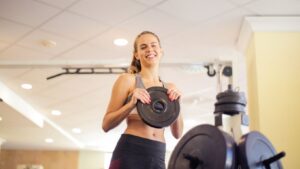
Embarking on a fitness journey can be both exciting and challenging. As a fitness enthusiast, I understand the importance of having a well-structured workout plan to achieve your desired physique. In the competitive world of fitness modeling, the workout regimen of these professionals is not just about sweating it out at the gym; it’s a strategic combination of exercises tailored to sculpt a lean and toned body.
Understanding Fitness Models’ Regimen
When it comes to fitness models’ workout plan, it’s essential to grasp the intricacies of their regimen to achieve similar results. Let’s delve into the key components that comprise a fitness model’s routine and the pivotal role of nutrition and diet in their fitness journey.
To truly embody the physique of a fitness model, one must understand the fundamental elements that make up their workout plan. Fitness models prioritize a blend of resistance training, cardio, and flexibility exercises to sculpt their bodies. Combining strength training with high-intensity intervals is a common strategy to enhance muscle definition while burning excess fat.

In a typical fitness model workout plan, you would find a mix of exercises focusing on different muscle groups. For instance, a routine might include squats, lunges, push-ups, and planks to target major muscle areas effectively. Cardio sessions such as sprints or cycling intervals are incorporated to boost overall endurance and calorie expenditure.
Consistency is key in following a fitness model’s regimen. They adhere to a structured schedule, often working out several times a week to maintain their physique. Additionally, incorporating variety in workouts keeps the body challenged and helps prevent plateaus in progress.
The Importance of Nutrition and Diet
While a rigorous workout plan is vital, fitness models emphasize that nutrition plays an equally crucial role in achieving their desired physique. A well-balanced diet rich in lean proteins, complex carbohydrates, healthy fats, and a variety of fruits and vegetables is essential for fueling workouts and supporting muscle recovery.
Fitness models often follow a meal plan tailored to their specific goals, focusing on nutrient-dense foods that provide sustained energy throughout the day. Protein intake is prioritized to aid muscle repair and growth, while carbohydrates are strategically consumed to replenish glycogen stores after intense workouts.

Hydration is another cornerstone of a fitness model’s diet. Staying adequately hydrated is essential for performance, recovery, and overall health. Water not only regulates body temperature but also facilitates nutrient absorption and waste removal, crucial aspects for maintaining peak fitness levels.
By understanding and implementing the comprehensive approach to a fitness model’s regimen, individuals can strive to achieve their fitness goals effectively and efficiently.
Fitness Models Workout Plan
In a fitness model’s workout plan, resistance training plays a fundamental role in sculpting the body. It involves using external resistance, such as weights, resistance bands, or body weight, to strengthen and tone muscles. The emphasis is on performing exercises that target specific muscle groups to create a balanced and defined physique. For example, exercises like squats, lunges, deadlifts, and overhead presses are commonly included to build muscle mass and enhance muscle definition.
Cardiovascular Exercises for Endurance

Cardiovascular exercises are vital in a fitness model’s workout routine to improve endurance, burn calories, and enhance cardiovascular health. These exercises elevate the heart rate and increase oxygen consumption, leading to improved stamina and fat loss. Examples of cardiovascular exercises include running, cycling, swimming, and HIIT (High-Intensity Interval Training). Incorporating a mix of steady-state cardio and interval training helps boost metabolism, increase calorie burn, and optimize overall fitness levels.
Flexibility and Core Training
Flexibility and core training are essential components of a fitness model’s workout plan to enhance mobility, stability, and overall performance. Flexibility exercises, such as yoga or stretching routines, help improve range of motion, prevent injuries, and promote recovery. Core training focuses on strengthening the abdominal and back muscles to maintain posture, support the spine, and improve athletic performance. Including exercises like planks, Russian twists, and leg raises in the workout regimen aids in developing a strong core and achieving a balanced physique.
